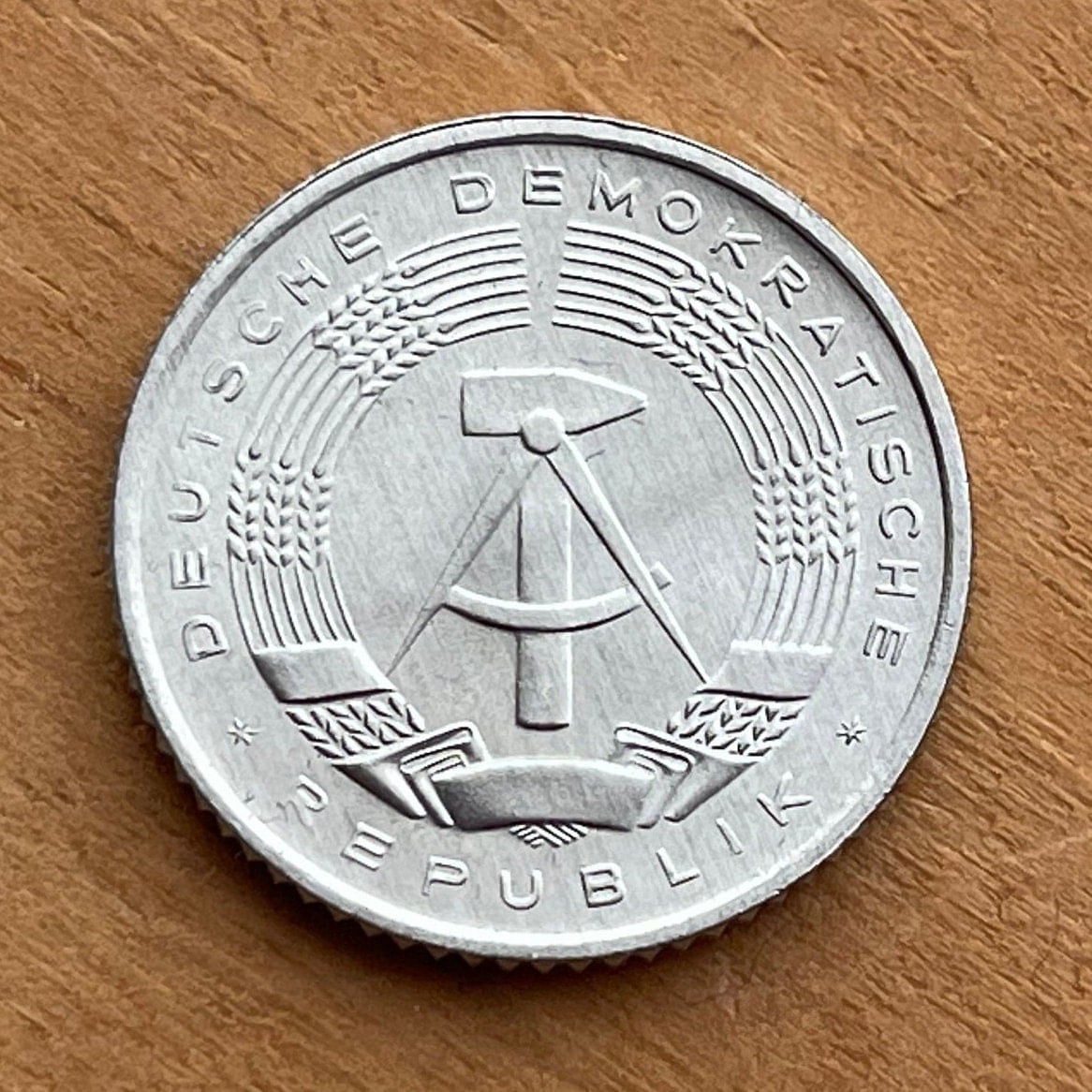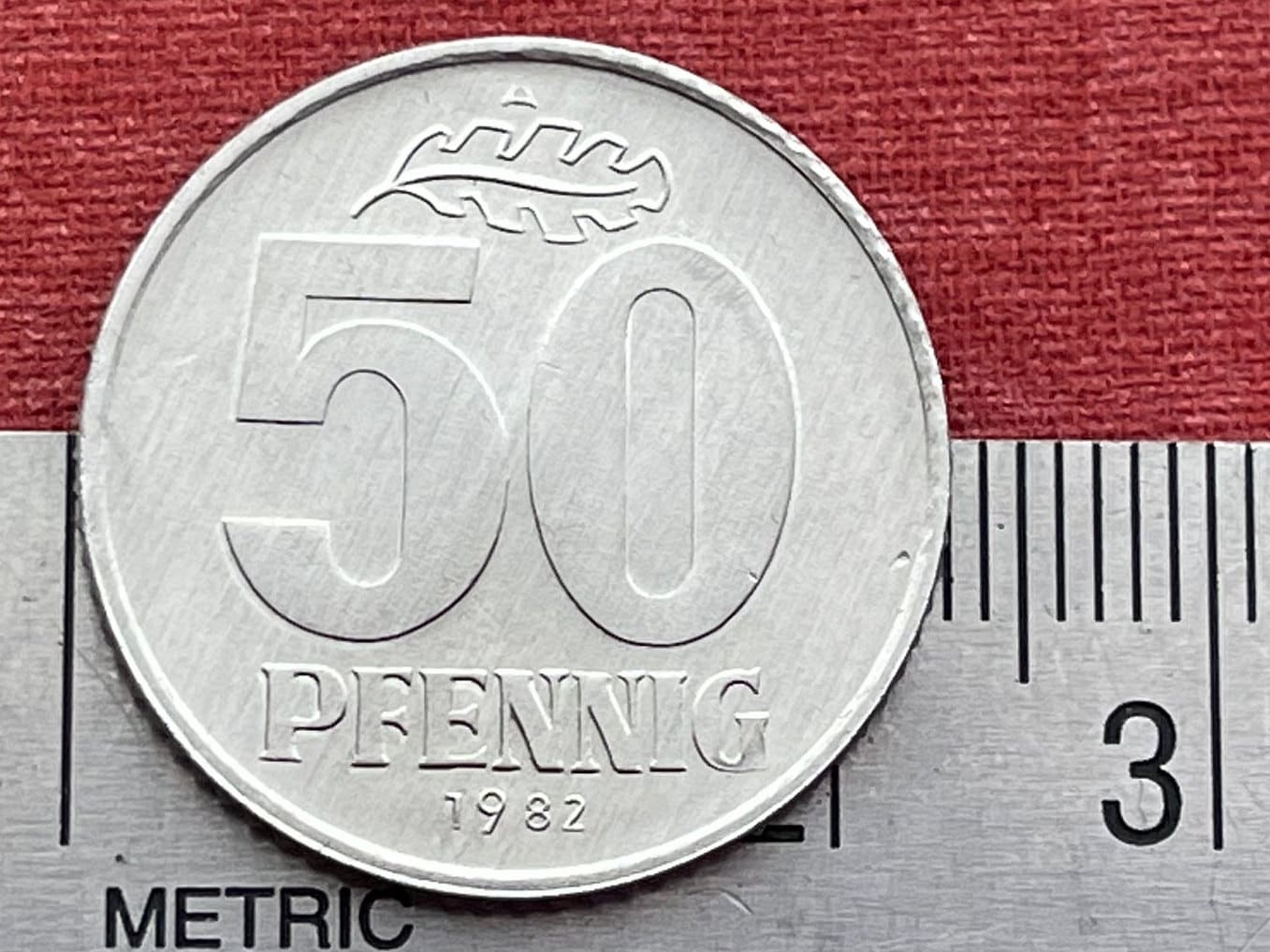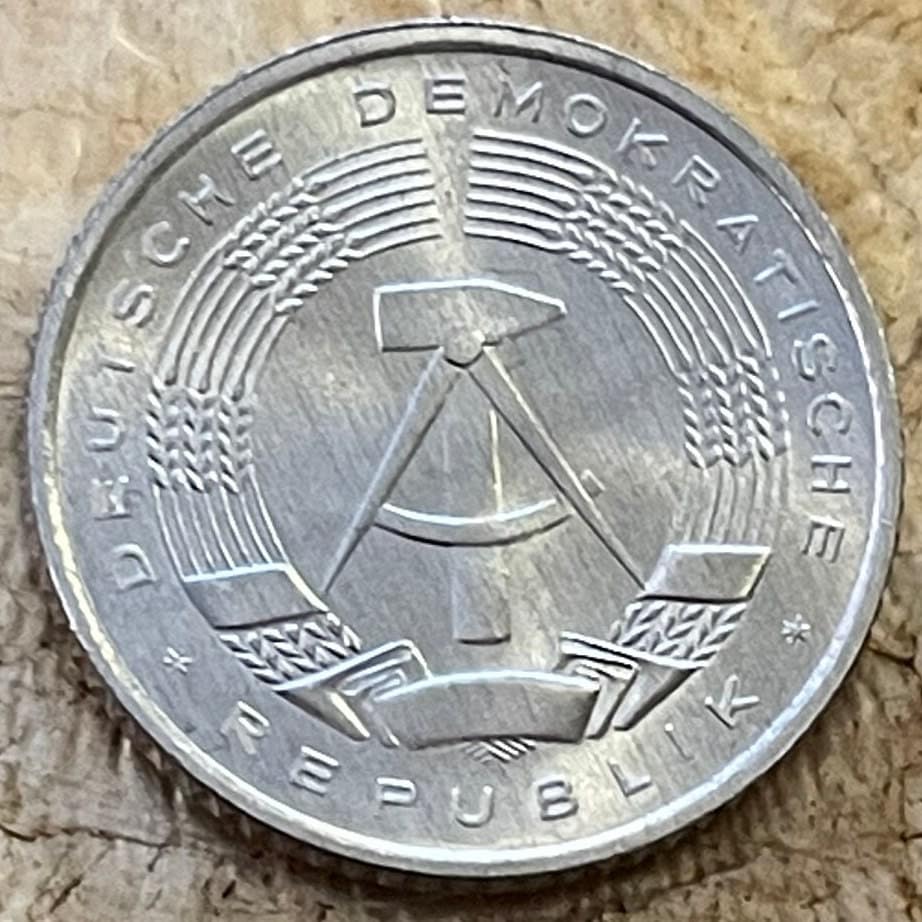elemintalshop
Hammer, Compass, Corn Wreath 50 Pfennig East Germany Authentic Coin Money for Jewelry and Craft Making (German Democratic Republic)
Hammer, Compass, Corn Wreath 50 Pfennig East Germany Authentic Coin Money for Jewelry and Craft Making (German Democratic Republic)
Couldn't load pickup availability
Hammer, Compass and Corn Wreath 50 Pfennig East Germany Authentic Coin Money for Jewelry and Craft Making (German Democratic Republic)
Obverse: State emblem of the German Democratic Republic (hammer and a compass, surrounded by a wreath of corn with a ribbon displaying the flag colours: black, red and yellow), also known as East Germany, with the country name around the rim.
Lettering: DEUTSCHE DEMOKRATISCHE
* REPUBLIK *
Translation: German Democratic
Republic
Reverse: Face value below an oak leaf.
Lettering: A
50 PFENNIG
Edge: Reeded
Features
Issuer German Democratic Republic (Germany)
Period Republic (1948-1990)
Type Standard circulation coin
Years 1958-1990
Value 50 Pfennig (0.50 DDM)
Currency Mark (1948-1990)
Composition Aluminium
Weight 2 g
Diameter 23 mm
Thickness 2.02 mm
Shape Round
Technique Milled
Orientation Medal alignment ↑↑
Demonetized 1 July 1991
Number N# 2032
References KM# 12, Schön# 12
Wikipedia:
The national emblem of East Germany featured a hammer and a compass, surrounded by a wreath of corn. It was an example of what has been called "socialist heraldry". It was the only heraldic device of a European socialist state with a ring of grain which does not contain a red star.
Description
The hammer represented the workers in the factories. The compass represented the intelligentsia, and the wreath of corn the farmers. The first designs included only the hammer and wreath of corn, as an expression of the GDR as a communist "Workers' and Farmers' state" (Arbeiter- und Bauernstaat). Surrounded by a wreath, the national emblem also acted as the emblem for the National People's Army, and when surrounded by a twelve pointed white star, for the People's Police.
When the federated states in East Germany were abolished and replaced by Bezirke, making the GDR into a unitary state, the national emblem came to be used by the Bezirke too. The East German government did not want regional symbols to be used, since they could stir up regional patriotism and movements for independence.
The emblem was adopted as the GDR's national emblem by a law of 26 September 1955, and added to the national flag by a law of 1 October 1959.
The emblem in West Germany
The display of the national emblem was for some years regarded as unconstitutional in West Germany and West Berlin and was prevented by the police. Only in 1969 did the West German government of Willy Brandt reverse this policy in what was known as Ostpolitik.
Share










Good quality, and shipped quickly!









